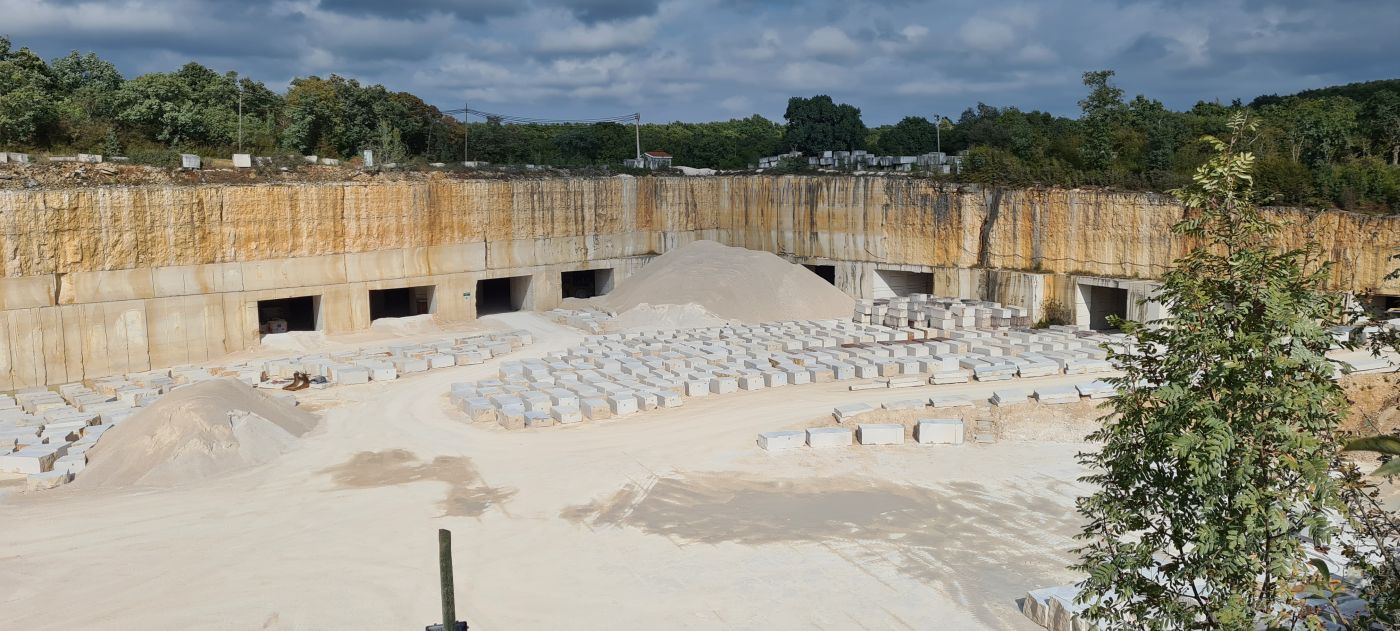Underground Stone Exploitation
Underground exploitation is a relatively new approach to stone exploitation. While surface exploitation is still the most common method of obtaining stone, the underground method can replace the former method in those situations where the exploitation process is technically demanding and economically unprofitable. Despite a number of advantages of underground exploitation over surface exploitation, it is not always possible, but its application depends on many geological, physical and mechanical conditions that must be met.
In order to access the deposit from the surface, it is necessary to remove the overburden, a non-profitable rock mass that covers the useful mineral resource. In the case when the overburden is of large thickness, there are high costs in terms of removal and disposal, which may jeopardize the profitability of the exploitation field. With the underground method, the exploitation is performed below the overburden that remains in the roof of the underground mine, which reduces the total cost of exploitation since there is no need to remove or dispose of the overburden (Farkaš et al.). Because exploitation takes place below the surface, underground quarries distort the appearance of the landscape to a much lesser extent, making them an environmentally and aesthetically more acceptable option than surface quarries.
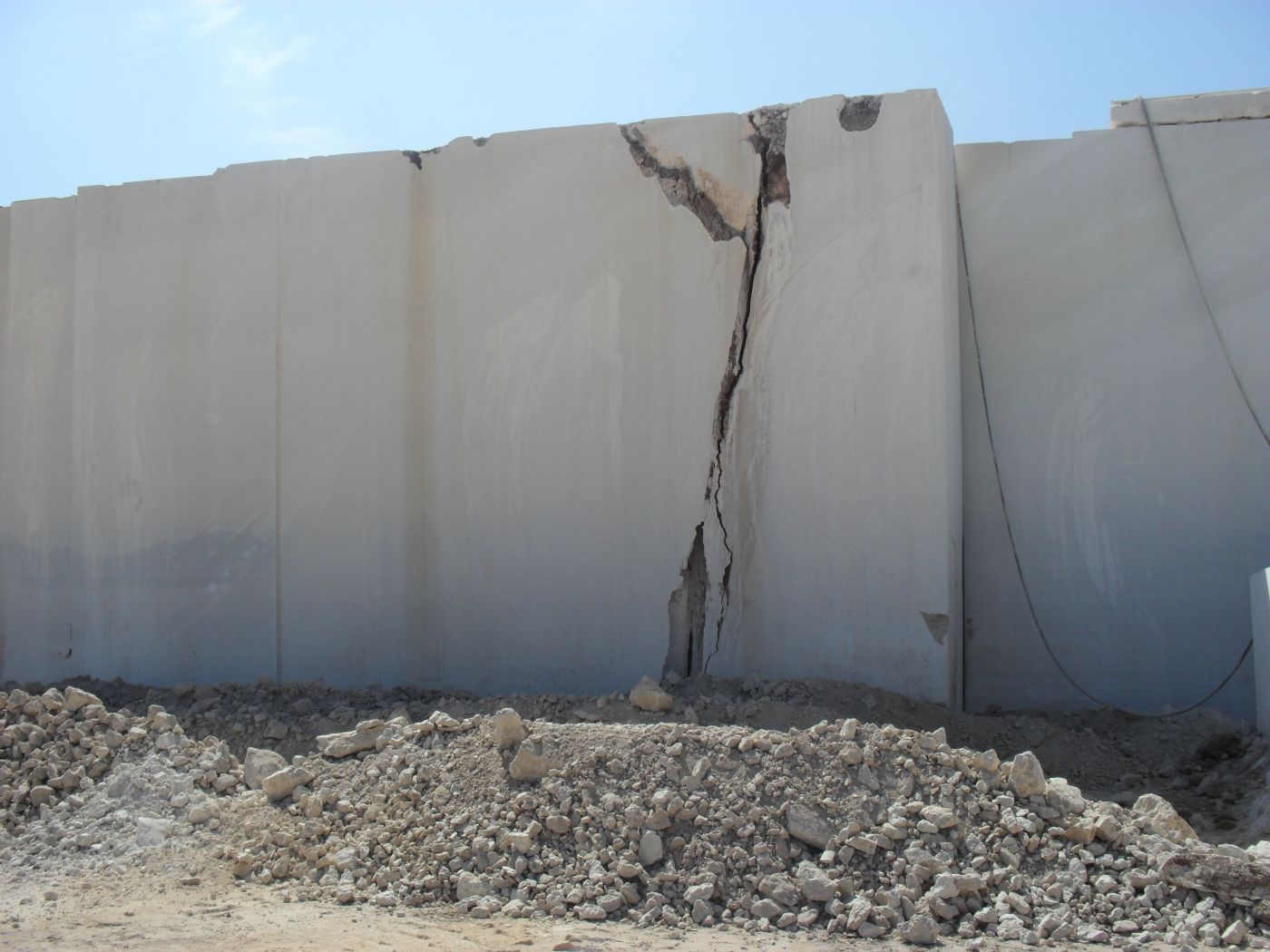
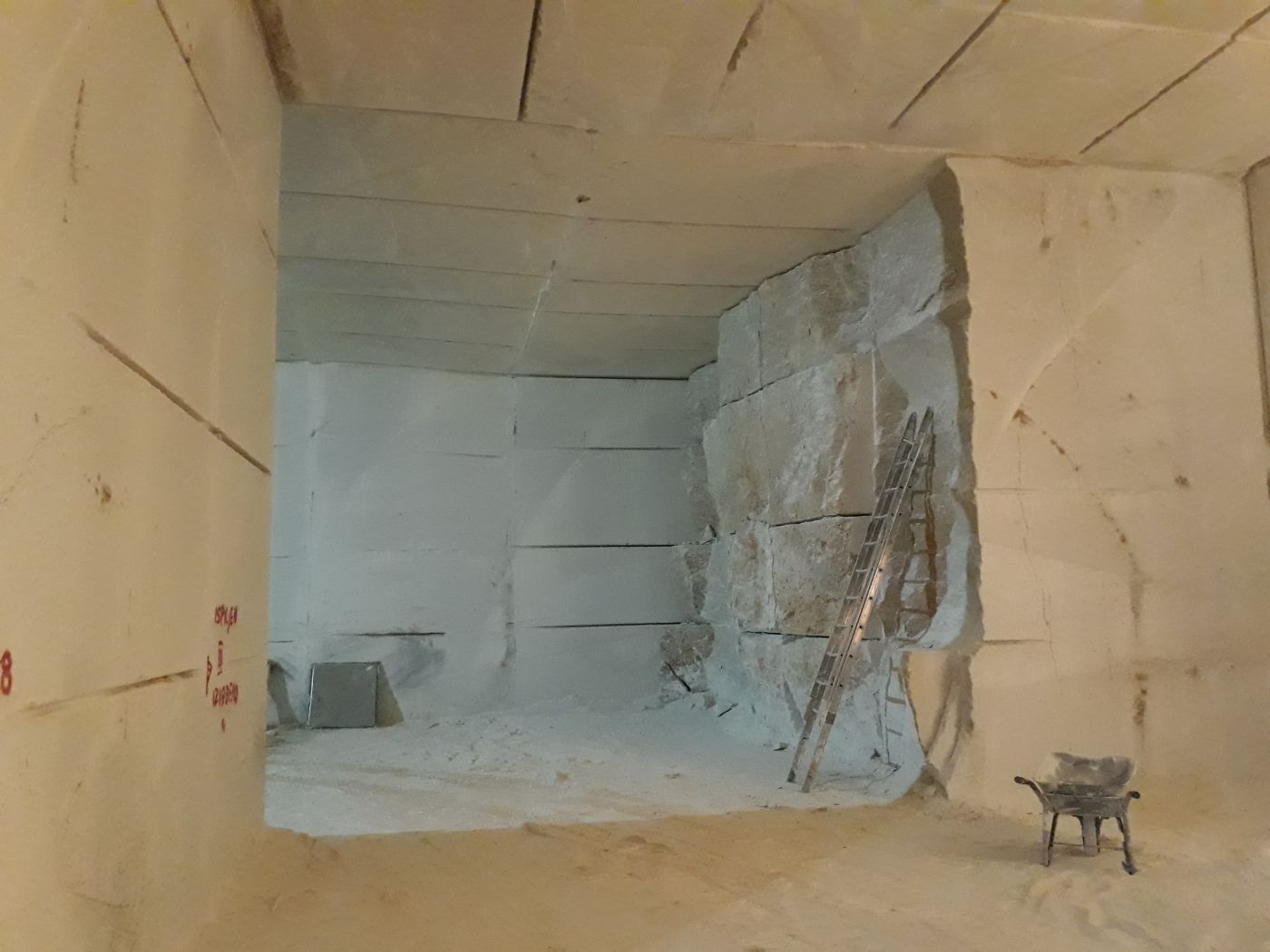
With surface exploitation, the primary block of the working front height must first be separated from the rest of the rock mass by sawing, then demolished and ultimately cut into secondary, i.e., commercial blocks. Underground quarries use a specialized stone cutting machine (underground cutter) that cuts the rock front directly into commercial blocks, which greatly simplifies and speeds up the technological process of obtaining blocks.
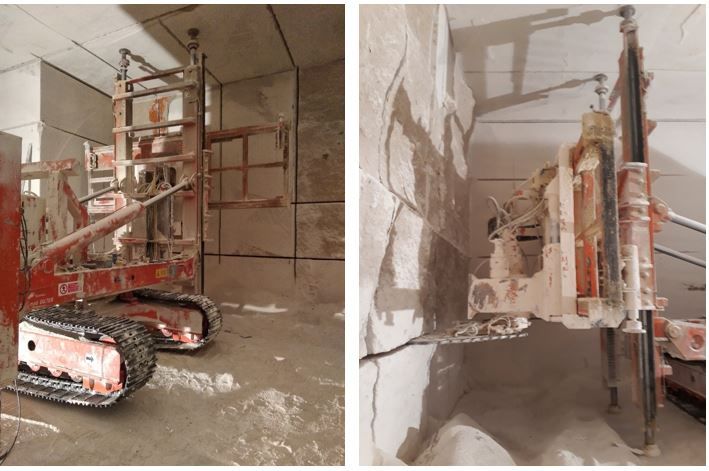
Principle of development of the underground quarry
The most common method of underground stone exploitation is the room and pillar method. The extraction of stone blocks enables the formation of exploitation chambers, while leaving the stone in the form of retaining pillars ensures that there is no roof collapse when doing underground exploitation.
Depending on the compressive strength of the retaining pillar and the state of discontinuity in the pillars and the roof, the ratio between the gallery surface and the pillars surface is determined. The more unfavorable the condition of the rock mass in the roof and pillars is, the greater the required surface area of the retaining columns. In order to dimension the pillars, it is necessary to determine the amount of stress being placed on the pillars as well as the compressive strength of the retaining pillars.
With the aim of obtaining as large and complete blocks as possible, excavation galleries are opened in intact parts of the deposit while pillars are formed from those parts which show discontinuities. For this reason, it is very important to assess the impact of discontinuity on the compressive strength of retaining pillars based on the number and slope of discontinuities (Farkaš et al.).
The ratio of compressive strength and stress in the retaining pillar constitutes the safety factor, and the recommended ratio for the retaining pillar is 1.8; furthermore, on the basis of this safety factor the width and length of pillars and chambers are determined (Farkaš et al.).
After the blocks are removed, the engineer’s job is to plot the exploitation on the mining map and determine the provision of discontinuities in order to further plan the progress of the underground exploitation.
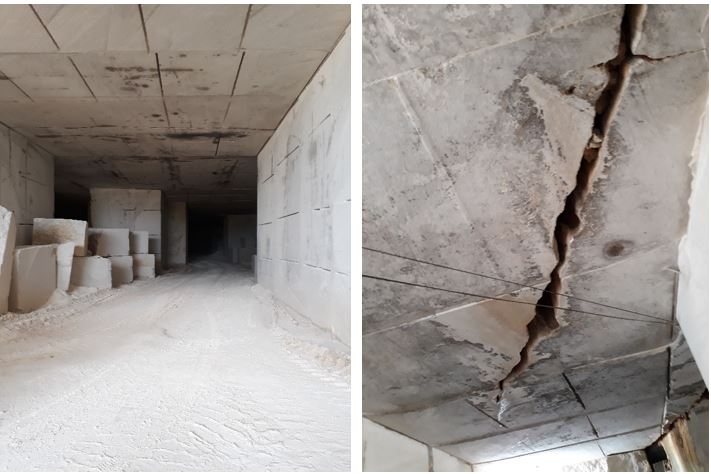
The main disadvantage of the underground method in relation to the surface method is that a large share of useful mineral raw materials (about 20% and sometimes more) is left in the retaining pillars to protect the underground quarry. In addition, underground exploitation requires more extensive investigation and testing required to determine the optimal size and suitable layout of the retaining pillars. Also, the initial investment in the underground quarry is higher because underground exploitation uses more complex machines than those used for surface work, and since the work takes place underground, it is necessary to develop a ventilation system which further increases the cost of exploitation.
Conclusion
Technological advances in mining mechanization have led to the development of a method that has enabled relatively simple exploitation of hard-to-reach stone deposits. And while the choice of exploitation method is primarily determined by geological, physical, mechanical and economic conditions, environmental acceptability is an argument that can go in favor of underground exploitation. By increasing society’s awareness of landscape conservation, underground quarries enable cost-effective exploitation that is both acceptable to the environment and society.
